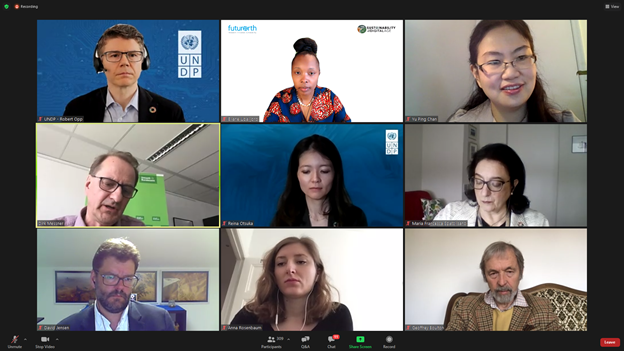|
STATUS NOTE: Thank you for all of your contributions and thoughtful comments to this specific consultation forum on the draft CODES flagship report. The moderation of this specific forum page was finalized on June 30 2021, and this thread was closed accordingly. All of your inputs are taken note of. Based on inputs, the CODES Co-champions are compiling an Action Plan, which will be brought back to the stakeholders for comments by early 2022 through a new forum. |
In this room, we want to continue the conversation that started during the CODES launch event. In particular, we want to focus on the three big questions that were raised:
|


Can you recommend specific network mapping software so that we can visualize the network, understand connections and nodes of influence ?
David Jensen
https://www.r-project.org or, if you must have a GUI, https://gephi.org/
David Jensen
Yes , I think i do understand "nodes of influence" can still use it.
I will recommend Lucid chart; is one of the powerful software networks. Easy to use to visualize processes, charts, diagrams & more.. Anyone, in any sector and any role, can use It. Any ideas, information, and processes to drive better decisions in every aspect of business. What do you think? https://www.lucidchart.com/pages/landing/network_diagram_software?utm_s…
Kenyatta Mirindi
I've been using Lucidchart. It is an excellent tool that can be used for many tasks!
As an avid system and network mapper, I think this is a key step.
Here's an initial demo map I did in support of David's amazing collaborative papers.
https://www.sparkblue.org/content/overview-map-digital-ecosystem-planet
What would a version for CODES look like? Anyone interested in a call on this?
David Jensen - I would definitely recommend https://kumu.io/ It is a platform that allows you to create public projects for free and to collaborate with other Kumu users around the globe.
julian.blanc thanks - good suggestions. I’m looking for something where the network members can actually fill out their details and maintain their own profiles. So something more bottom-up. Any suggestions along these lines ?
Héctor Tuy thanks. We’ve tried this kumu once before and it works well. I’d like to find something that can be used in a bottom up manner by the codes community as well as something that can automatically remap the network according to different structural organizing approaches (taxonomies).
Christina Bowen thanks ! Let’s jump on a call and see what would be the best platform to use. We could try Kumu again or something like Flatfile. I have also seen something called Collaboration Spotting that looks rather interesting.
Christina Bowen I think we also need to think about using NFTs as both an incentive structure for keeping member profiles up to date as well as part of the governance and upvoting structure when we move into ideation and prioritization. Can people share any examples where NFTs are being used for bottom-up governance by the community members ? It is a new space for me so apologies in advance for my ignorance :)
David Jensen on NFTs https://www.wired.com/story/nfts-hot-effect-earth-climate/
Thiago Henrique Dos Santos ¡Comparto tu opinión! Utiizo Lucidchart para realizar cosas simples como cuadros sinópticos y esas cosas, es muy fácil de usar. Saludos.